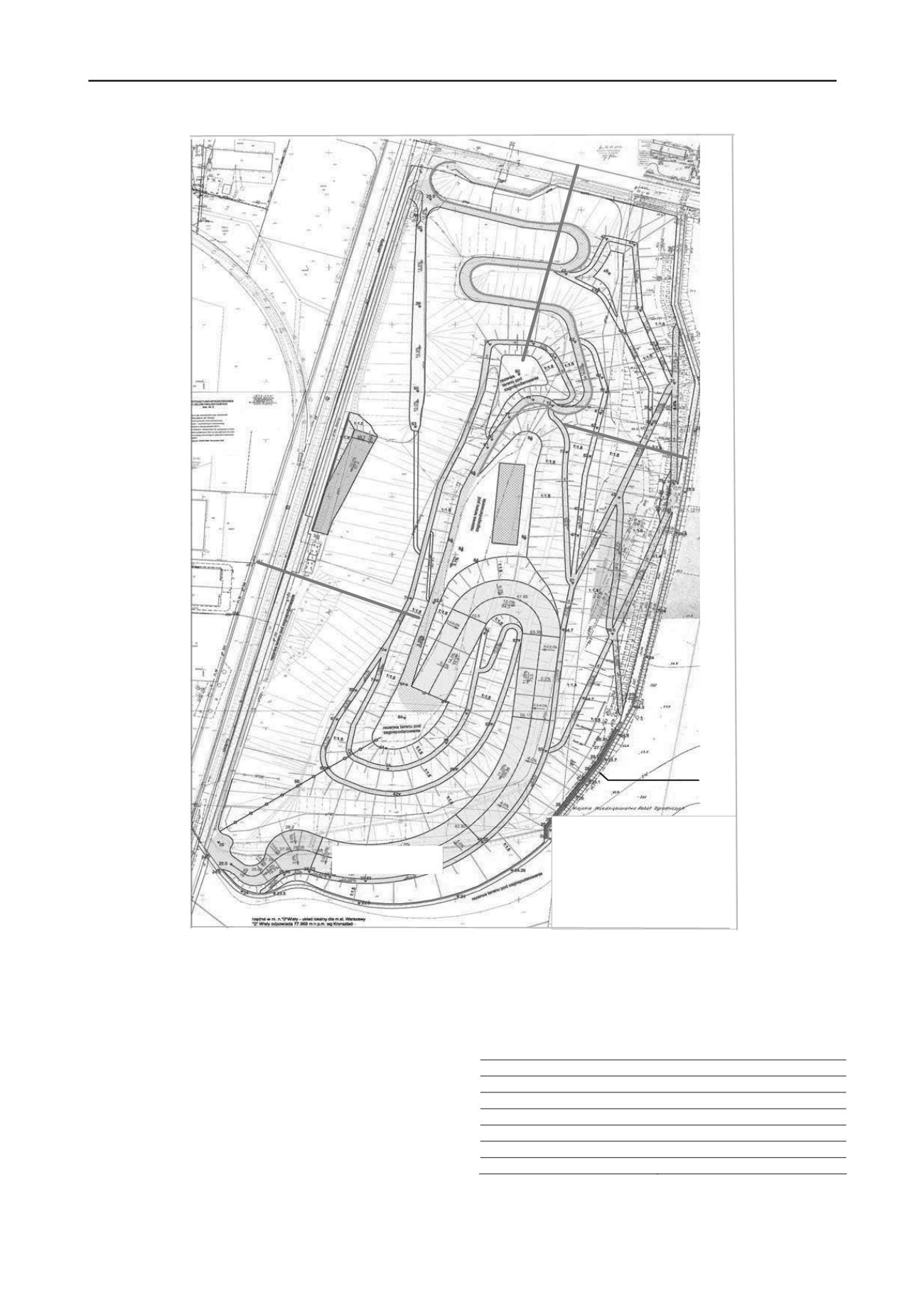
2526
Proceedings of the 18
th
International Conference on Soil Mechanics and Geotechnical Engineering, Paris 2013
III
III
II
II
retaining wall
Legend:
I
- slope with grass carpets
II
- designed slope with grass
III
- slope with trees
designed ski slope
I
I
Figure 1. Current development plan of Radiowo landfill, and location of cross-section for slope stability analyses.
Because of its appropriate geotechnical properties like
impermeability and good compaction conditions, flay-ashes
mixed with cohesive soil are a great material for the capping
system. Recently it was recommended to use geomembrane
instead of mineral barriers to insulate the surface of the landfill,
however there are lots of disadvantages like decreasing slope
stability or slowing down the bio-chemical decomposition of
waste. Applying mineral capping systems (made of ashes and
sewage sludge), in many cases resulted in enhanced
fermentation processes (Koda 2011).
The flay-ash is basically a by product of the coal combustion
process in power plants. The mineral and chemical composition
is determined by mineral elements present in coal. These
minerals are: iron oxides, carbonates and clayey minerals. The
properties of the flay-ash mainly depend on shape and size
distribution of its particles. The bulk density of ashes contains
in the range of 2000-2500 kg/m
3
.
The reason for this is some of the particles are filled with
gas. The chemical reactions proceeding during the coal
combustion process produce mineral phases stated in Table 1.
Table 1. Mineral phases of the fly-ash (Koda and Osinski 2011).
Mineral phases
% content of total mass
Glass
60-83
Millite
4-25
Quartz
4-18
Hematite
0.5-2
Magnetite
1-7
Coke
0.5-5
The additional anthropogenic component which also
presents high usability in terms of slope surface reinforcement
is sewage sludge (Katsumi et al. 2010). The mineral elements of


